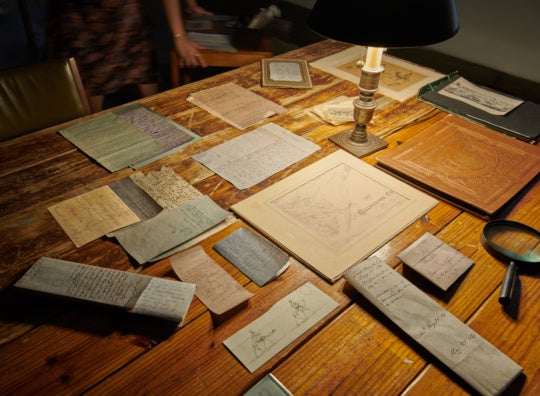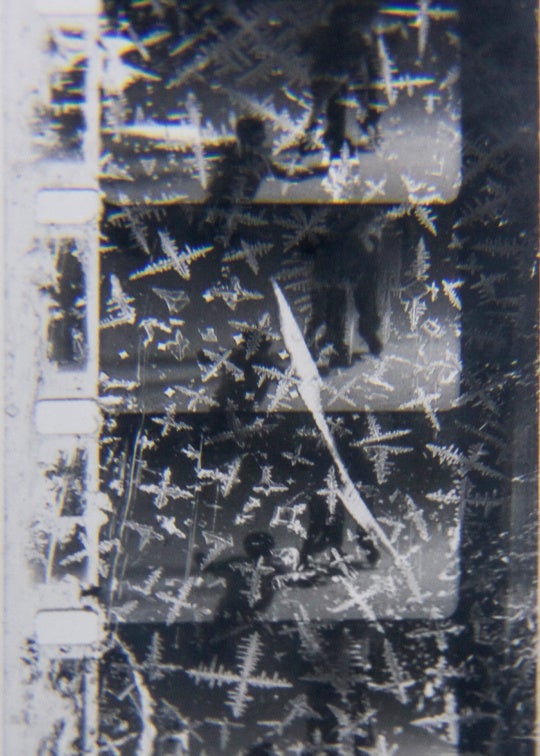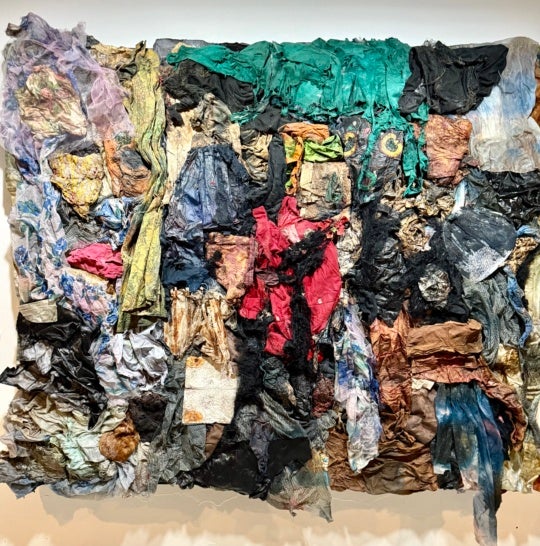
Song Byeok’s first-ever exhibition in the United States opens at the Goat Farm at 7-10:30PM, Friday, February 17, 2012, and stays on view for one week through February 26.
When artist Song Byeok was still living in his native Hwanghae province of North Korea, conditions for him in his family were so dismal that he and his father were forced to risk escaping into China in order to find food. During one of the attempts, Mr. Song’s father was washed away in a current while crossing a river. Helpless and near starving, the young man approached North Korean guards to ask for help finding his father. Instead of helping, the guards beat him and treated him as a suspect. Byeok was forced to return to his family, beaten, without food, and worst of all, without the family’s patriarch. Such were the conditions of life for those living under the notorious regime of the late Kim Jong-il.
Song Byeok’s story is a tragic one, and I’m afraid it gets worse before it gets better.
You see, as a child, Byeok took to drawing and sketching. His drawings were noticed by members of the ruling party, and soon he was asked to work for the government as a propaganda artist. Song was made to create images that would promote loyalty to their Eternal Leader, Kim, that bore phrases such as, “Let’s Become The Bullet For General Kim Jong-il!” Bear in mind that this is the same fascist government that had caused his family to the brink of starvation, beaten him when he needed help, and caused the death of his own father.
In 2002, no longer able to bear the misery of his life, Song escaped to South Korea. Here he found a life unlike anything he had ever experienced. Unlike his home country, The Republic of Korea offered democracy, sprawling modernity, and, above all, basic human rights. Song was overwhelmed by the level of freedom he was able to enjoy.
It wasn’t long before the artist, who was for the first time in his life able to paint whatever he pleased, turned his brush on the regime that had caused his family, and millions of others, so much pain. Song began to paint satirical images that turned the id of political propaganda on his head, famously painting Kim Jong-il’s head onto and iconic image of liberal figurehead, Marilyn Monroe. His work quickly became a sensation in his adopted homeland.
I myself was living in Seoul, South Korea, in 2010, only months after a North Korean torpedo sank the Cheonan, a South Korean military vessel, killing 46 sailors. It has been speculated that the attack was a final show of strength for Kim Jong-il, whose health had been questions for years, in order to ensure the succession of his son, Jong-un, which came to pass after the elder’s death in December of 2011.
In the aftermath of the attack, tensions between the two countries were at a fevered pitch. The air raid sirens in Seoul were tested regularly and images of Kim Jong-il were nearly permanent fixtures on most television screens. The spectre of the North Korean war machine, which makes up the fourth largest standing army in world, looms over its neighbor to the South—having several times threatened nuclear war. There, Song’s work stands as a stark reminder of a reality that we, as freedom enjoying Americans, might tend to tune out.
In February, only two months removed from the death of Kim Jong-il and the succession of his son, Song Byeok will hold his first-ever exhibition in the United States at Atlanta’s own Goat Farm. BURNAWAY was given an opportunity to speak with the artist, by email and through a translator, to ask a few questions about his work and his thoughts on the current state-of-things in his home region.
Winston Ward (WW): Freedom of expression seems to be an over-riding theme in your work. When you were exiled to South Korea in 2002, how surprised were you to by the differences in levels of freedom? What about here in America?
Song Byeok (SB): The differences in levels of freedom is there for everyone to see. I was initially astonished by how South Korean youths can express themselves freely by way of their clothing style and hair color. But my transition to life in South Korea was not easy; I had no family or friends to welcome my arrival. In order to avoid becoming a “restless defector” and find a productive role in the community, I pursued my art. And while my satirical paintings won very few fans at the outset, the ability to express myself freely helped me to more fully understand freedom and adapt to a new life.
WW: Atlanta is honored to host your work and to be the first city to do so in the United States. What factors led to you choosing the Goat Farm?
SB: My representatives, Gregory Pence and Mike Lee, found a place for me to debut in the U.S. The Goat Farm Arts Center is a very popular space that’s helping fuel the emerging art scene in Atlanta, and the city’s storied history of pushing civic and national freedoms forward in the face of opposition—Atlanta is the birthplace of famous civil rights leader Dr. Martin Luther King, Jr.—aligns with the themes present in my own work. My expo would not have been possible without SB-ATL Group, whose members include Nicole O. Conrad, Matt Synder, John Davis, Kay Um, Hannah Barker, and Nana Lee.

WW: How is the reception for your work in South Korea compared to your reception elsewhere? Do you think that there is greater understanding for those living nearer to the issue, or do you think the themes are universal?
SB: My audience has grown the last year since my first solo show, Forever Freedom. The press and SB-ATL Group has helped me to connect with new fans worldwide, bringing attention to the North Korea issue and the need for freedom of expression. I believe my art is universal, and pays respect to the sacrifices made by men and women taking a stand against tyranny. But, as is customary with most satire, my artwork has its supporters and detractors everywhere. I’m proud to be Korean and remain grateful to the growing number of Koreans who appreciate what I’m trying to do. Humor can go a long way towards resolving differences.
WW: Having worked as a propagandist for Kim Jong-il and his regime, what is your impression of the current goings-on in North Korea (Kim Jong-il’s death, and so on), and what would you most like to see happen?
SB: Kim Jong-il created a cult of personality that worshiped him as a god, and I was once complicit in propagating this falsehood. I think his death revealed to the world that’s he was human—just like the rest of us. It’s now time for reform.
WW: Could you attempt to verbalize the overall theme of your work in a sentence?
SB: My work is about the journey to secure human rights and peace for mankind.




